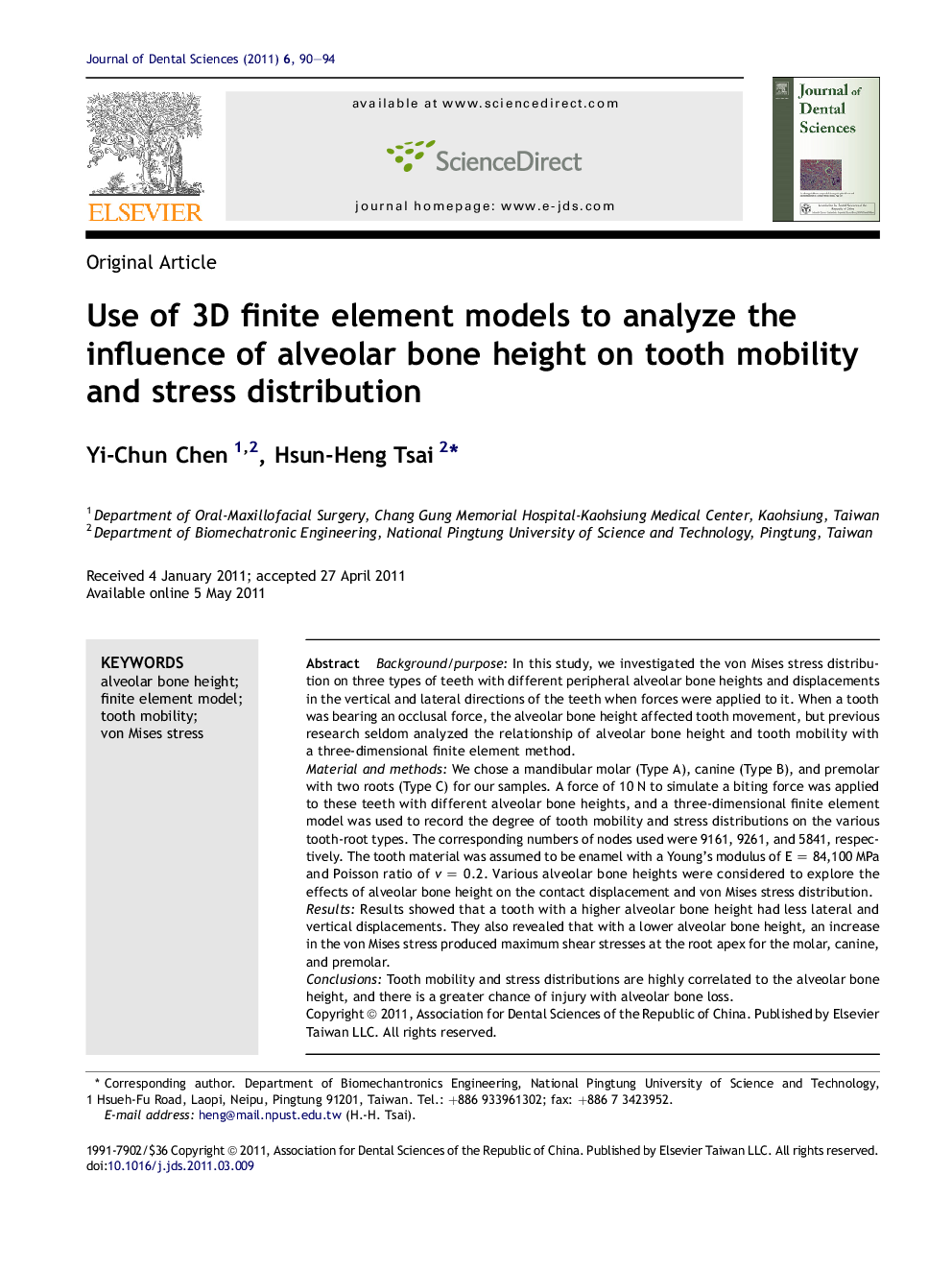| Article ID | Journal | Published Year | Pages | File Type |
|---|---|---|---|---|
| 3144818 | Journal of Dental Sciences | 2011 | 5 Pages |
Background/purposeIn this study, we investigated the von Mises stress distribution on three types of teeth with different peripheral alveolar bone heights and displacements in the vertical and lateral directions of the teeth when forces were applied to it. When a tooth was bearing an occlusal force, the alveolar bone height affected tooth movement, but previous research seldom analyzed the relationship of alveolar bone height and tooth mobility with a three-dimensional finite element method.Material and methodsWe chose a mandibular molar (Type A), canine (Type B), and premolar with two roots (Type C) for our samples. A force of 10 N to simulate a biting force was applied to these teeth with different alveolar bone heights, and a three-dimensional finite element model was used to record the degree of tooth mobility and stress distributions on the various tooth-root types. The corresponding numbers of nodes used were 9161, 9261, and 5841, respectively. The tooth material was assumed to be enamel with a Young’s modulus of E = 84,100 MPa and Poisson ratio of v = 0.2. Various alveolar bone heights were considered to explore the effects of alveolar bone height on the contact displacement and von Mises stress distribution.ResultsResults showed that a tooth with a higher alveolar bone height had less lateral and vertical displacements. They also revealed that with a lower alveolar bone height, an increase in the von Mises stress produced maximum shear stresses at the root apex for the molar, canine, and premolar.ConclusionsTooth mobility and stress distributions are highly correlated to the alveolar bone height, and there is a greater chance of injury with alveolar bone loss.
